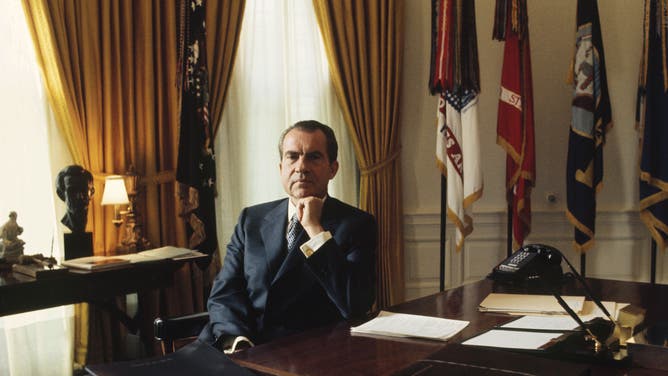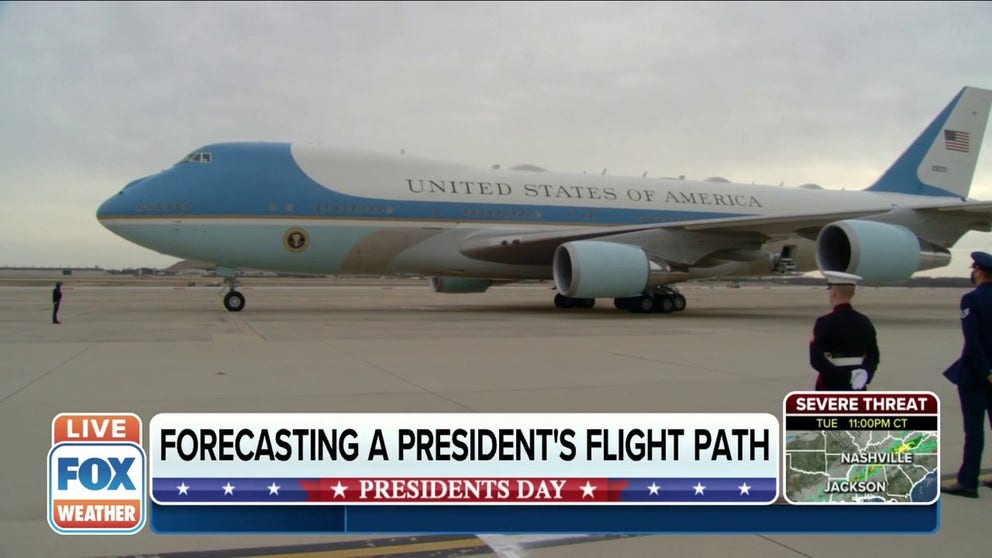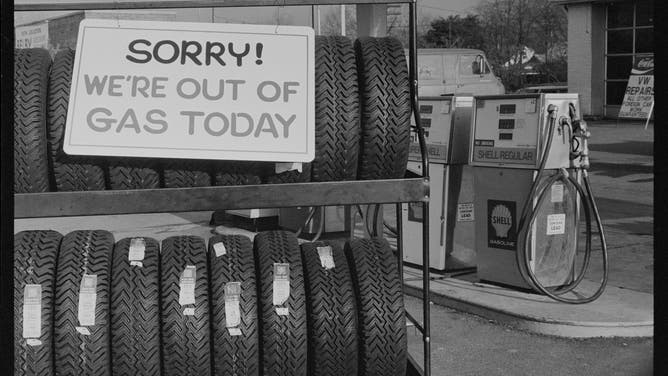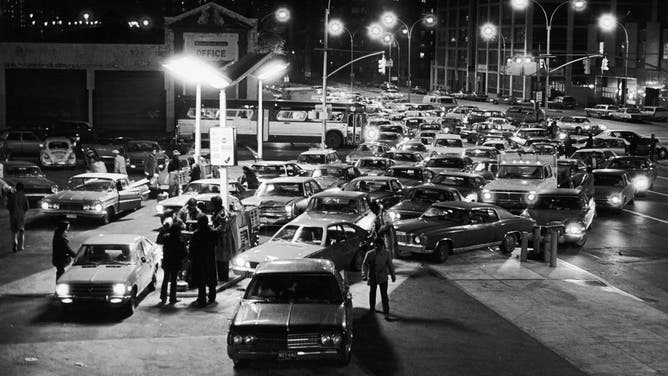When the President controlled the thermostat
In the 1970s, the OPEC oil embargo created an oil crisis, pushing the U.S. to find ways to reduce its energy usage. One of those ways, suggested by President Nixon, was through the thermostat in American homes
What meteorologists look out for when forecasting a president's flight path
U.S. Air Force meteorologists need to look out for more than just clouds and storms along a president's flight path.
It’s 1973. The Vietnam War officially ends. Roe v. Wade becomes law. Disco is becoming mainstream.
Amidst this backdrop of cultural and political change, a major energy crisis hit the U.S., grinding many aspects of American life to a halt.
The oil crisis and its impact

President Richard Nixon in the Oval Office. Nixon was the President during the 1973 oil embargo.
(Don Carl Steffen / Gamma-Rapho / Getty Images)
In October 1973, the U.S. was hit with an oil embargo by the Arab nations of the Organization of the Petroleum Exporting Countries (OPEC). The embargo, which cut oil production and banned petroleum exports, was placed in retaliation against the U.S. and other countries supporting Israel during the Arab-Israeli War.
At the time, the U.S. imported a third of its oil from the Middle East, making the country vulnerable to OPEC’s suspension of oil shipments.
HOW WEATHER IMPACTS OIL DRILLING OPERATIONS
Gas shortages became rampant, long lines of cars formed at gas stations, and oil prices nearly quadrupled. Within a few months, the country's economic output dropped by an estimated $15 billion.
Nixon and Project Independence
President Richard Nixon attempted to assuage the crisis in November by enacting some of the country’s first major energy-conscious measures.
Called Project Independence, the response included various ways Americans could reduce their energy usage during the oil embargo and reduce their dependence on foreign energy over the next several years.
A few of the actions Nixon announced in Project Independence included decreasing speed limits on the highways to 50 miles per hour and encouraging mass transit and carpooling. Other actions involved adjusting work and school schedules and returning the country to Daylight Saving Time.
THE HISTORY OF DAYLIGHT SAVING TIME
Additionally, Project Independence shifted industries, utilities and power plants to the use of coal and limited the supply of heating oil to offices, homes, etc.
Bringing down the temperature
Nixon also asked Americans to lower their thermostats by at least 6 degrees. The hope was to reach an average daytime temperature of 68 degrees in homes, helping curtail the consumption of heating oil and coal-powered electricity across the nation.
This could have been seen as a substantial ask of the American people, as the winter season was ramping up and temperatures were beginning to drop. Plus, temperatures of 70 to 72 degrees were believed to be typical for homes in the wintertime, and there was no method for federal oversight of thermostats of every home.
Because of these considerations, the lowering of thermostats was done on a voluntary basis. While there was no official mandate for some of Nixon’s requested actions, by December, electricity use decreased by 10%, and gas consumption dropped by 9%.
On March 18, 1974 – as winter drew to a close and spring began to peek through – the Arab oil ministers lifted the oil embargo.
The oil embargo, lifted

Secretary of State Henry Kissinger meeting with President Richard Nixon at the White House in March 1974. Nixon and Kissinger negotiated Arab OPEC members to end the oil embargo.
(Universal History Archive / Universal Images Group / Getty Images)
Although the U.S. made it through its first energy crisis, it was far from unscathed; however, lessons about energy usage and energy independence were learned.
In 1975, legislation was passed that created the Energy Policy and Conservation Act, enacting the first standards for fuel efficiency in automobiles.
Two years later, the administration under President Jimmy Carter created the Department of Energy.
WHEN IS IT ACCEPTABLE TO TURN THE HEAT ON IN YOUR HOME?
In January of that year, when the nation faced a natural gas shortage, Carter asked Americans to lower their thermostats once again by three degrees cooler than his predecessor asked – a chilly 65 degrees.


